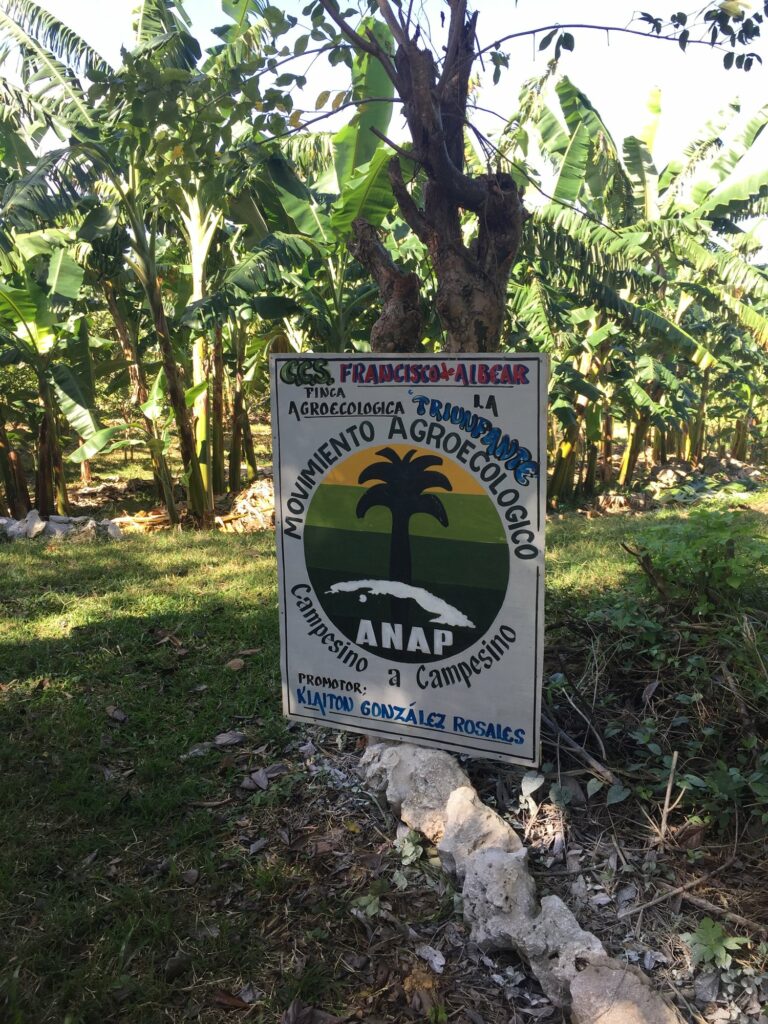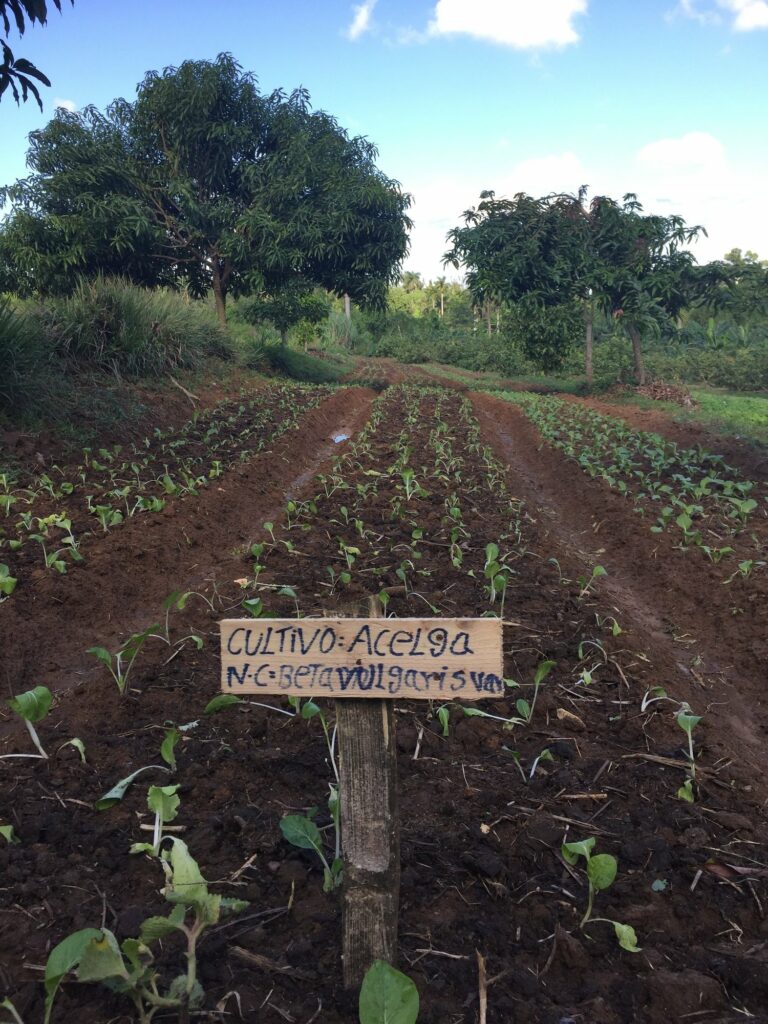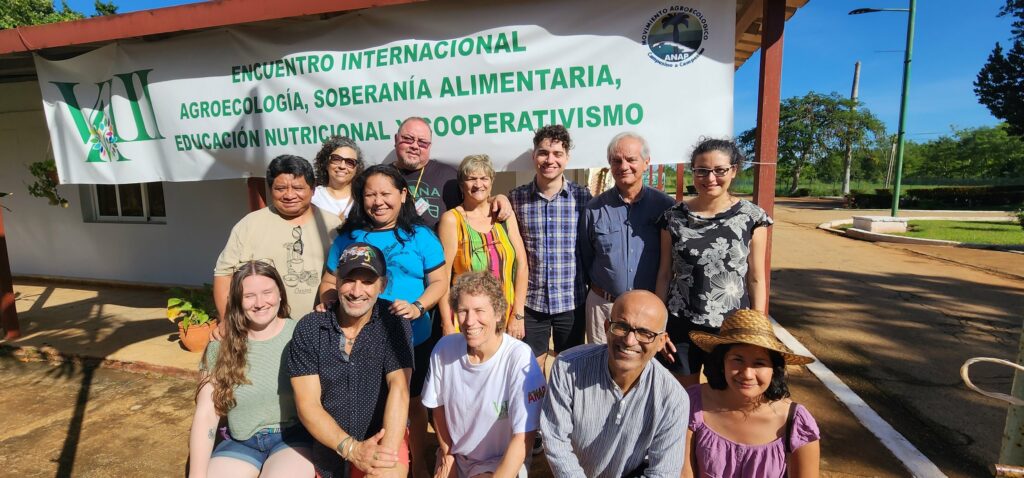At dawn on November 13th, 2022, I left my home in Lima to head to La Havana, Cuba, where Agroecology Fund donors, advisors and staff were to take part in the 8th International Encounter on Agroecology, Food Sovereignty, Nutritional Education and Cooperative Movements. This encounter is held biennially, hosted by Cuba’s National Association of Small Farmers (ANAP). Upon arrival in La Havana, the Agroecology Fund delegation headed south, to the Niceto Pérez Farmer Training School in Güira de Melena, where we would be hosted over the next week.

The encounter kicked off on the morning of November 14th with a famous Cuban Décima*, recited by two ANAP farmers. This poem, filled with the revolutionary energy of the Cuban agroecological movement, set the tone for the days to come.
*The Décima is a popular form of improvised poetic expression, which has been used historically by peasant communities across Latin America as a means to express and spread ideological struggles.
We then heard from several influential actors in the Cuban agricultural sector, including Idael Pérez Brito (Minister of Agriculture), Adilén Roque Jaime (researcher and member of ANAP) and Armando Hernandez Romero (member of ANAP’s Directive Board). These actors highlighted the key roles of ANAP and of the farmer-to-farmer movement in building a just food system in Cuba based on the dignity of all people – farmers and consumers alike. This movement is working to promote food sovereignty despite the challenges of an unfavorable and unstable political context.
We witnessed firsthand the achievements of this historic fight led by Cuban peasants when we took part in three full days of site visits across three provinces: La Havana, Mayabeque, and Artemisa.
In the province of La Havana, where peasants work to overcome the difficulties of farming on very small plots of land, we learned about the advantages of a cooperative model which allows small farmers to collectively process and commercialize their harvests. The Cuban government purchases a portion of the harvest as part of its public procurement program and the remainder can be sold on the open market, including to hotels and restaurants.

Entrance to an agroecological farm named ‘The Triumphant’, part of the Francisco de Albear cooperative situated in the province of La Havana.


Klaiton González Rosales, owner of The Triumphant, explains an innovative technique to address water scarcity – transplanting lettuce seedlings directly into cut-down banana tree trunks, which retain more humidity than soil. (La Havana).
Next, we visited Mayabeque, a province known for pioneering innovative agrarian technology. We visited an investigation center affiliated with a local university, carrying out research to improve technical aspects of agroecological production. The center’s researchers highlighted the importance of collaboration with farmers (those who ultimately should decide which technologies are best suited to their needs and to the realities of Cuban agriculture). This participative approach to research is rooted in the values of the farmer-to-farmer movement.

On the final day of field visits, we were warmly received at three farms in the Artemisa province. Here, farmers amazed us with their highly diversified farming systems which integrate many species of animals, trees, and vegetables. During our visit to ‘La Herminita’ farm – part of a cooperative that brings together more than 69 farming families – we learned more about the centrality of solidarity and cooperation among farmers. By being part of ANAP, farmers work collectively towards a common goal – to provide safe and healthy food to the Cuban people while ensuring the protection of their environment, the conservation of native and local varieties, and the dignity of Cuban farmers. ANAP has grown alongside a land reform program which lies at the heart of the Cuban revolution. 60 years later, Cuba, like so many countries, experiences high rates of rural to urban migration. To counteract this, ANAP provides support services to the country’s small producers and the land reform program remains open for families who seek land to cultivate.


My experience in Cuban lands, though short, convinced me that alternatives to industrial farming methods are possible: models that are based on cooperation and solidarity, rather than on competition and profit; models that are sustained in agroecology as a way not only to provide safe foods, but also to restore justice and equity in our food systems. In the face of deep ecological, economical, and political challenges, Cuba’s National Association of Small Farmers has built a system which is favorable to both farmers and consumers – giving us further evidence that agroecology and food sovereignty are truly viable.
